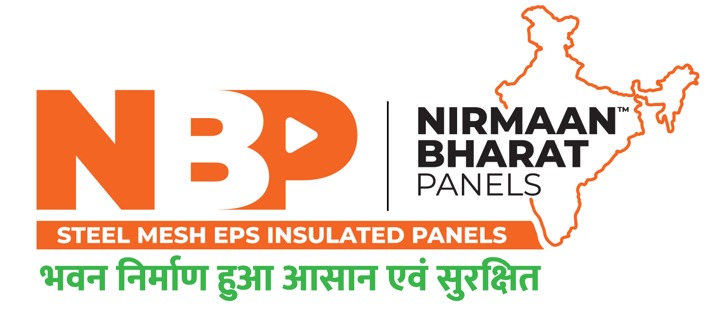The building and construction industry is in constant search of innovative solutions that provide better efficiency, cost-effectiveness, sustainability, and faster construction timelines. One such revolutionary material that is gaining significant traction in modern construction is EPS (Expanded Polystyrene) Wall Panel. These panels are transforming the way buildings are constructed by addressing a range of challenges that traditional materials like concrete, brick, and steel can’t easily overcome. In this blog, we will explore how EPS Wall Panel are changing the building industry and why they are becoming a preferred choice for both residential and commercial projects.
Table of Contents
ToggleWhat are EPS Wall Panels?
EPS Wall Panels are pre-fabricated, lightweight, and durable panels made from expanded polystyrene (EPS) foam, sandwiched between two layers of reinforced concrete or other durable materials. The EPS foam serves as an insulating core, providing excellent thermal and acoustic insulation, while the outer layers offer strength and stability. These panels come in various sizes and thicknesses to cater to different structural and insulation needs.
EPS Wall Panels are designed for use in both exterior and interior walls, and their versatility makes them suitable for a wide range of applications, including residential homes, commercial buildings, industrial facilities, and even infrastructure projects like sound barriers and bridge decks.
How EPS Wall Panels Are Revolutionizing the Building Industry
1. Energy Efficiency and Thermal Insulation
One of the most significant advantages of EPS Wall Panels is their exceptional thermal insulation properties. The EPS foam core acts as a barrier to heat flow, which helps maintain a stable indoor temperature. This leads to considerable energy savings by reducing the need for heating in winter and cooling in summer.
In comparison to traditional brick or concrete walls, Expanded Polystyrene Wall Panels offer superior insulation performance, significantly enhancing the energy efficiency of buildings. This is especially critical in areas with extreme climates, where energy bills for heating and cooling can be substantial.
Moreover, buildings constructed with EPS Wall Panels are compliant with modern energy efficiency standards, making them an attractive choice for those looking to meet sustainability goals and reduce carbon footprints. The energy savings generated by Expanded Polystyrene Wall Panels can also offset initial installation costs over time, making them a cost-effective long-term solution.
2. Faster Construction Time
Traditional building methods often involve lengthy construction timelines due to the time it takes to lay bricks, pour concrete, and allow materials to cure. With EPS Wall Panels, the construction process is significantly faster. These panels are pre-fabricated in factories and can be quickly assembled on-site, reducing the overall construction time.
The ease of installation and the lightweight nature of EPS Wall Panels make them ideal for projects with tight deadlines. Construction teams can install entire wall sections in just a few days, which reduces labour costs and accelerates project completion. In many cases, EPS Wall Panels can reduce the construction time by as much as 50% compared to traditional methods.
Additionally, fewer workers are required on-site to assemble the panels, which further enhances efficiency and reduces the risk of delays due to labour shortages.
3. Cost-Effectiveness
EPS Wall Panels are generally more affordable than traditional building materials like bricks, concrete, or steel. The cost savings stem from several factors:
- Reduced Labor Costs: Since EPS Wall Panels are lightweight and easy to install, fewer workers are required, leading to lower labour costs.
- Faster Construction: The quick installation process reduces the overall construction time, which in turn decreases costs associated with project delays and extended labour hours.
- Lower Energy Bills: The thermal insulation properties of EPS Wall Panels help reduce energy consumption, leading to lower heating and cooling bills in the long run.
The initial cost of EPS Wall Panels is often higher than that of traditional materials, but the long-term savings in energy, labour, and construction time make them a highly cost-effective choice for many projects.
4. Durability and Strength
EPS Wall Panels are incredibly durable and can withstand various environmental challenges, including moisture, termites, and fire. The outer layers of the panel are typically made from reinforced concrete or fibre-reinforced polymer, which offers excellent resistance to impacts, weathering, and mechanical stresses.
While the EPS foam core is lightweight, it does not compromise the overall strength of the wall panel. In fact, EPS Wall Panels have been shown to exhibit high compressive strength, which makes them suitable for load-bearing applications in both residential and commercial buildings.
Additionally, the panels are highly resistant to water absorption, which reduces the risk of mold and mildew growth, common issues with traditional building materials like wood or gypsum. This makes EPS Wall Panels ideal for use in humid climates or areas with high levels of moisture.
5. Sustainability and Environmental Impact
In today’s construction industry, sustainability is a key consideration. EPS Wall Panels offer significant environmental benefits when compared to traditional building materials. The production of EPS foam involves less energy consumption and produces fewer emissions than other insulation materials like fibreglass or polyurethane.
Furthermore, the long-term energy savings from using EPS Wall Panels contribute to reducing the building’s carbon footprint. By reducing the need for heating and cooling, buildings constructed with EPS Wall Panels can help mitigate the effects of climate change by lowering greenhouse gas emissions.
EPS Wall Panels are also recyclable, which means that at the end of a building’s lifecycle, the panels can be repurposed, reducing the amount of waste sent to landfills. This makes EPS Wall Panel a more sustainable option compared to traditional building materials that may not be easily recycled.
6. Improved Acoustic Performance
Another key benefit of EPS Wall Panels is their ability to provide excellent sound insulation. The EPS foam core acts as a sound barrier, reducing noise transmission between rooms or from the outside environment. This is particularly valuable in urban areas, where noise pollution can be a significant issue.
EPS Wall Panels are often used in applications where noise control is essential, such as in residential buildings near highways or airports, offices in busy city centres, and hotels where guest comfort is a priority. The acoustic properties of EPS Wall Panel help create quieter, more comfortable living and working environments.
7. Versatility and Customization
EPS Wall Panels are highly versatile and can be customized to meet the specific needs of a project. They are available in various thicknesses, sizes, and configurations to accommodate different building designs and structural requirements.
The panels can be used in both exterior and interior walls and can be easily adapted for use in various types of buildings, including homes, commercial spaces, schools, hospitals, and industrial facilities. EPS Wall Panels can also be combined with other materials, such as steel or wood, to enhance the structural performance of the building.
Moreover, the panels can be pre-finished with a variety of textures and finishes, including plaster, paint, or decorative cladding, allowing architects and designers to achieve the desired aesthetic for the building.
8. Fire Resistance
EPS Wall Panels can be manufactured to meet fire safety standards, making them a safe option for construction projects where fire resistance is essential. The concrete or other fire-resistant outer layers of the panel protect the EPS foam core from fire, preventing the spread of flames through the walls.
EPS Wall Panel have been tested and certified to meet various fire resistance ratings, ensuring that they comply with building codes and regulations in different regions. This makes them a reliable choice for both residential and commercial buildings where fire safety is a top priority.
Conclusion
EPS Wall Panels are undoubtedly changing the building industry by offering a range of benefits that address the challenges of modern construction. Their energy efficiency, cost-effectiveness, fast installation, durability, and sustainability make them an attractive alternative to traditional building materials. As the demand for sustainable, efficient, and cost-effective construction solutions grows, EPS Wall Panel are poised to play an increasingly important role in shaping the future of the building industry.
For builders, architects, and developers looking to adopt innovative construction technologies, EPS Wall Panels offer an opportunity to create smarter, more sustainable buildings while reducing costs and construction time. As the building industry continues to evolve, EPS Wall Panel will undoubtedly remain at the forefront of this transformation, offering endless possibilities for the future of construction.


